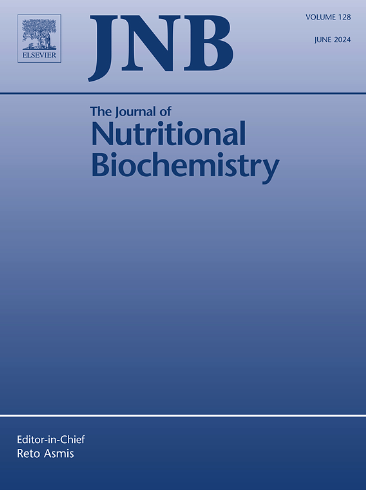Cardioprotective effect of senotherapy in chronically obese middle-aged female rats may be mediated by a MERCSs/Nrf2 interaction
IF 4.9
2区 医学
Q1 BIOCHEMISTRY & MOLECULAR BIOLOGY
引用次数: 0
Abstract
Hypercaloric intake promotes the development of obesity, a risk factor for cardiovascular disease (CVD). In recent years, it has been suggested that senescent cells have negative implications for the outcome of these chronic pathologies, and senotherapy has emerged as a novel intervention to reduce damage to the organism. However, it is unclear whether the accumulation of senescent cells induces alterations at the cardiac level in rats fed a hypercaloric diet (HD) and if the use of senotherapeutics can reverse it. To address this question, we used middle-aged female rats fed HD from 21 days to 15 months of age. Under our experimental conditions, rats exhibited cardiac hypertrophy and fibrosis, accumulation of senescent cells, changes in mitochondrial morphology, and oxidative stress. Rats were treated for 2 months with senolytic (dasatinib + quercetin, DQ) or senomorphic (sulforaphane, SFN) agents. Interestingly, the HD rats showed cardiac improvement after the treatment. Our data suggest a possible link mechanism between Nrf2 activation and mitochondria-endoplasmic reticulum contact sites (MERCSs) preservation, activated by SFN rather than by the DQ combination, which allowed cardiac structure maintenance in HD rats decreasing the harmful effects of senescent cells.

老年治疗对慢性肥胖中年雌性大鼠的心脏保护作用可能是通过MERCSs/Nrf2相互作用介导的
高热量摄入促进肥胖的发展,这是心血管疾病(CVD)的危险因素。近年来,人们认为衰老细胞对这些慢性病理的结果有负面影响,衰老疗法已经成为一种新的干预措施,以减少对生物体的损害。然而,目前尚不清楚的是,在高热量饮食(HD)的大鼠中,衰老细胞的积累是否会引起心脏水平的改变,以及衰老疗法的使用是否可以逆转这一变化。为了解决这个问题,我们使用了21天至15个月大的中年雌性大鼠喂养HD。在我们的实验条件下,大鼠表现出心肌肥大和纤维化,衰老细胞积累,线粒体形态改变和氧化应激。大鼠分别用抗衰老(达沙替尼+槲皮素,DQ)或抗衰老(萝卜硫素,SFN)药物治疗2个月。有趣的是,治疗后HD大鼠的心脏状况有所改善。我们的数据表明Nrf2激活与线粒体-内质网接触位点(MERCSs)保存之间可能存在联系机制,通过SFN而不是DQ组合激活,可以维持HD大鼠的心脏结构,减少衰老细胞的有害影响。
本文章由计算机程序翻译,如有差异,请以英文原文为准。
求助全文
约1分钟内获得全文
求助全文
来源期刊

Journal of Nutritional Biochemistry
医学-生化与分子生物学
CiteScore
9.50
自引率
3.60%
发文量
237
审稿时长
68 days
期刊介绍:
Devoted to advancements in nutritional sciences, The Journal of Nutritional Biochemistry presents experimental nutrition research as it relates to: biochemistry, molecular biology, toxicology, or physiology.
Rigorous reviews by an international editorial board of distinguished scientists ensure publication of the most current and key research being conducted in nutrition at the cellular, animal and human level. In addition to its monthly features of critical reviews and research articles, The Journal of Nutritional Biochemistry also periodically publishes emerging issues, experimental methods, and other types of articles.
 求助内容:
求助内容: 应助结果提醒方式:
应助结果提醒方式:


